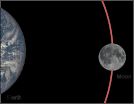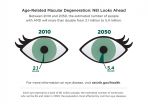NASA's LRO discovers Earth's pull is 'massaging' our moon
2015-09-15
(Press-News.org) Earth's gravity has influenced the orientation of thousands of faults that form in the lunar surface as the moon shrinks, according to new results from NASA's Lunar Reconnaissance Orbiter (LRO) spacecraft.
In August, 2010, researchers using images from LRO's Narrow Angle Camera (NAC) reported the discovery of 14 cliffs known as "lobate scarps" on the moon's surface, in addition to about 70 previously known from the limited high-resolution Apollo Panoramic Camera photographs. Due largely to their random distribution across the surface, the science team concluded that the moon is shrinking.
These small faults are typically less than 6.2 miles (10 kilometers) long and only tens of yards or meters high. They are most likely formed by global contraction resulting from cooling of the moon's still hot interior. As the interior cools and portions of the liquid outer core solidify, the volume decreases; thus the moon shrinks and the solid crust buckles.
Now, after more than six years in orbit, the Lunar Reconnaissance Orbiter Camera (LROC) has imaged nearly three-fourths of the lunar surface at high resolution, allowing the discovery of over 3,000 more of these features. These globally distributed faults have emerged as the most common tectonic landform on the moon. An analysis of the orientations of these small scarps yielded a surprising result: the faults created as the moon shrinks are being influenced by an unexpected source--gravitational tidal forces from Earth.
Global contraction alone should generate an array of thrust faults with no particular pattern in the orientations of the faults, because the contracting forces have equal magnitude in all directions. "This is not what we found," says Smithsonian senior scientist Thomas Watters of the National Air and Space Museum in Washington. "There is a pattern in the orientations of the thousands of faults and it suggests something else is influencing their formation, something that's also acting on a global scale -- 'massaging' and realigning them." Watters is lead author of the paper describing this research published in the October issue of the journal Geology.
The other forces acting on the moon come not from its interior, but from Earth. These are tidal forces. When the tidal forces are superimposed on the global contraction, the combined stresses should cause predictable orientations of the fault scarps from region to region. "The agreement between the mapped fault orientations and the fault orientations predicted by the modeled tidal and contractional forces is pretty striking," says Watters.
"The discovery of so many previously undetected tectonic features as our LROC high-resolution image coverage continues to grow is truly remarkable," said Mark Robinson of Arizona State University, coauthor and LROC principal investigator. "Early on in the mission we suspected that tidal forces played a role in the formation of tectonic features, but we did not have enough coverage to make any conclusive statements. Now that we have NAC images with appropriate lighting for more than half of the moon, structural patterns are starting to come into focus."
The fault scarps are very young - so young that they are likely still actively forming today. The team's modeling shows that the peak stresses are reached when the moon is farthest from Earth in its orbit (at apogee). If the faults are still active, the occurrence of shallow moonquakes related to slip events on the faults may be most frequent when the moon is at apogee. This hypothesis can be tested with a long-lived lunar seismic network.
"With LRO we've been able to study the moon globally in detail not yet possible with any other body in the solar system beyond Earth, and the LRO data set enables us to tease out subtle but important processes that would otherwise remain hidden," said John Keller, LRO Project Scientist at NASA's Goddard Space Flight Center, Greenbelt, Maryland.
Launched on June 18, 2009, LRO has collected a treasure trove of data with its seven powerful instruments, making an invaluable contribution to our knowledge about the moon. LRO is managed by NASA's Goddard Space Flight Center in Greenbelt, Maryland, under the Discovery Program, managed by NASA's Marshall Space Flight Center in Huntsville for the Science Mission Directorate at NASA Headquarters in Washington, DC.
INFORMATION:
[Attachments] See images for this press release:

ELSE PRESS RELEASES FROM THIS DATE:
2015-09-15
People with a genetic predisposition for age-related macular degeneration (AMD) significantly increased their odds of developing the blinding eye disorder if they had a history of heavy smoking and consistently did not exercise or eat enough fruits and vegetables, according to an observational study of women funded by the National Eye Institute, part of the National Institutes of Health.
Eating a healthy diet and getting exercise have been shown in earlier studies to protect against AMD, a leading cause of vision loss among people age 50 and older. Findings from this ...
2015-09-15
A new computational model developed by scientists from the University of Chicago could help improve the allocation of U.S. biomedical research resources. The tool, called the Research Opportunity Index (ROI), measures disparities between resources dedicated to a disease and its relative burden on society. ROI identifies diseases that receive a disproportionate share of biomedical resources, which represent opportunities for high-impact investment or for the realignment of existing resources. It is designed to provide an unbiased, data-driven framework to help scientific ...
2015-09-15
In the midst of ferry boats, container ships and tourists crowding Seattle's Elliott Bay, young salmon are just trying to get a decent meal.
The fish hatch in the rivers and streams that feed into Puget Sound and almost immediately rely on eating small organisms near the shore, including in the heart of Seattle's commerce-filled waterfront.
Though salmon share the busy Elliott Bay waters with boats and barges, scientists suspect built-up, "armored" shorelines and large piers may be the main culprits disrupting fish habitat. These artificial structures block light and ...
2015-09-15
Reminders to take medication, delivered to patients via an electronic pillbox, may be able to improve adherence to tuberculosis (TB) treatment. The findings, reported this week in PLOS Medicine, are the result of a cluster randomized controlled trial by Shiwen Jiang of the Chinese Centers for Disease Control & Prevention, Katherine Fielding, of the London School of Hygiene & Tropical Medicine, and colleagues.
The study randomized 36 districts in the provinces of Heilongjiang, Jiangsu, Hunan, and Chongqing, China to receive one of four approaches to tuberculosis case management: ...
2015-09-15
Selective serotonin reuptake inhibitor (SSRI) use is modestly associated with violent crime, according to a study published this week in PLOS Medicine. The cohort study, by Seena Fazel from the University of Oxford, and colleagues, showed in subgroup analysis that this association was evident in participants aged 15-24, but not significant for individuals aged 25 and older.
SSRIs are widely prescribed, but inconclusive evidence links SSRI use with violent behavior. In this study, Fazel and colleagues compared the rate of violent crime while individuals were prescribed ...
2015-09-15
Giving electronic reminders to tuberculosis (TB) patients in China can reduce the amount of medication doses they miss by half, according to new research published in PLOS Medicine.
Researchers from the London School of Hygiene & Tropical Medicine, UK, and the National Center for Tuberculosis Control and Prevention, China, conducted a trial with 4,173 patients from the provinces of Heilongjiang, Jiangsu, Hunan, and Chongqing. Patients either received text message reminders, an electronic medication monitor, both, or no reminders for their six month treatment period.
Patients ...
2015-09-15
Measuring how religion affects a person's political attitudes and behavior can provide powerful insight to everyone from pundits to presidents.
Now there's a new strategy to gather better, more nuanced perspective on that religious influence than ever before, developed by University of Cincinnati researchers.
UC's Andrew Lewis and Stephen Mockabee presented research titled "Measuring Biblical Interpretation and Its Influence on Political Attitudes" at the American Political Science Association's annual meeting earlier this month in San Francisco. The association serves ...
2015-09-15
MEDFORD/SOMERVILLE, Mass. (Sept. 15, 2015) -- Regenerative medicine using stem cells is an increasingly promising approach to treat many types of injury. Transplanted stem cells can differentiate into just about any other kind of cell, including neurons to potentially reconnect a severed spinal cord and repair paralysis.
A variety of agents have been shown to induce transplanted stem cells to differentiate into neurons. Tufts University biomedical engineers recently published the first report of a promising new way to induce human mesenchymal stem cells (or hMSCs, which ...
2015-09-15
A quarter of a century ago, the physicist, physician and cell biologist Professor Thomas Jentsch and his research team opened up an entirely new field of research in the field of ion transport. Now the British journal "The Journal of Physiology"* has devoted a special section in its latest issue to his discovery. In this issue (DOI: 10.1113/jphysiol.2014.270043), Professor Jentsch, who leads a research group at the Max Delbrück Center for Molecular Medicine in the Helmholtz Association (MDC) and at the neighboring Leibniz-Institut für Molekulare Pharmakologie ...
2015-09-15
New research from the USA suggests that college students are well aware that they should be personally responsible for their finances, including their card obligations, but this awareness rarely correlates with limiting the debts they accrue during their time in higher education. Details of the study are reported this month in the International Journal of Behavioural Accounting and Finance.
Lucy Ackert of the Department of Economics and Finance, at Kennesaw State University, in Georgia, and Bryan Church of the Scheller College of Business, at Georgia Tech, Atlanta, ...
LAST 30 PRESS RELEASES:
[Press-News.org] NASA's LRO discovers Earth's pull is 'massaging' our moon


